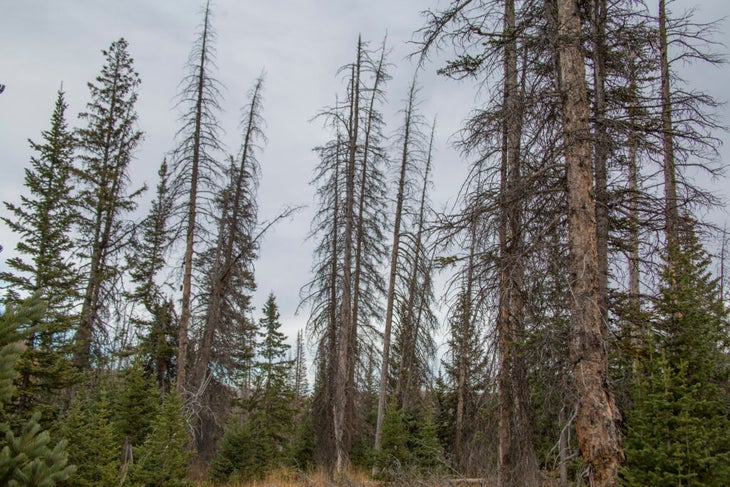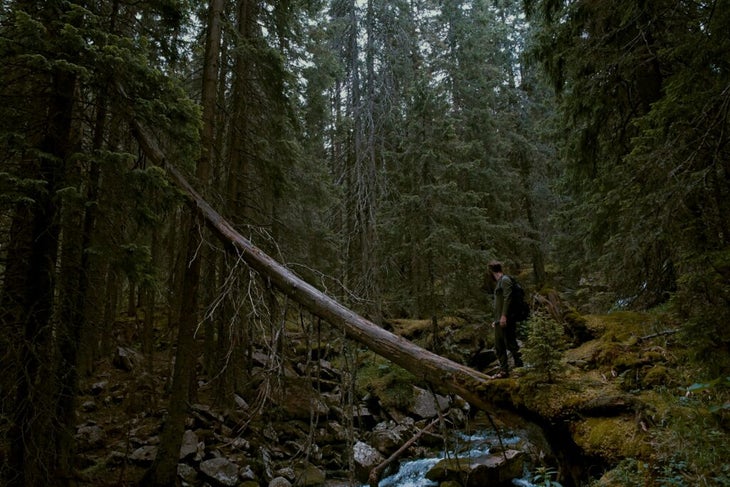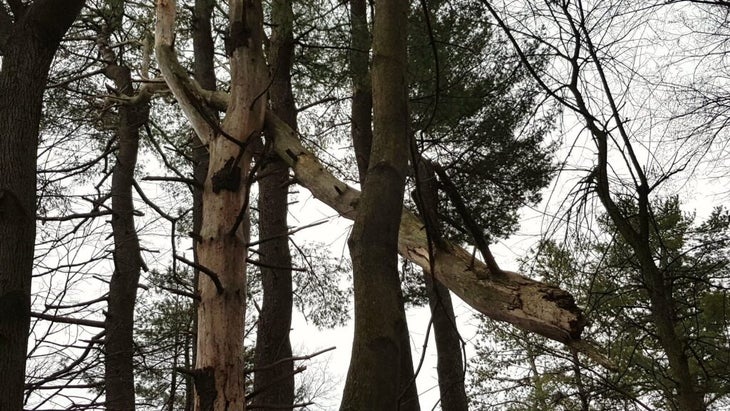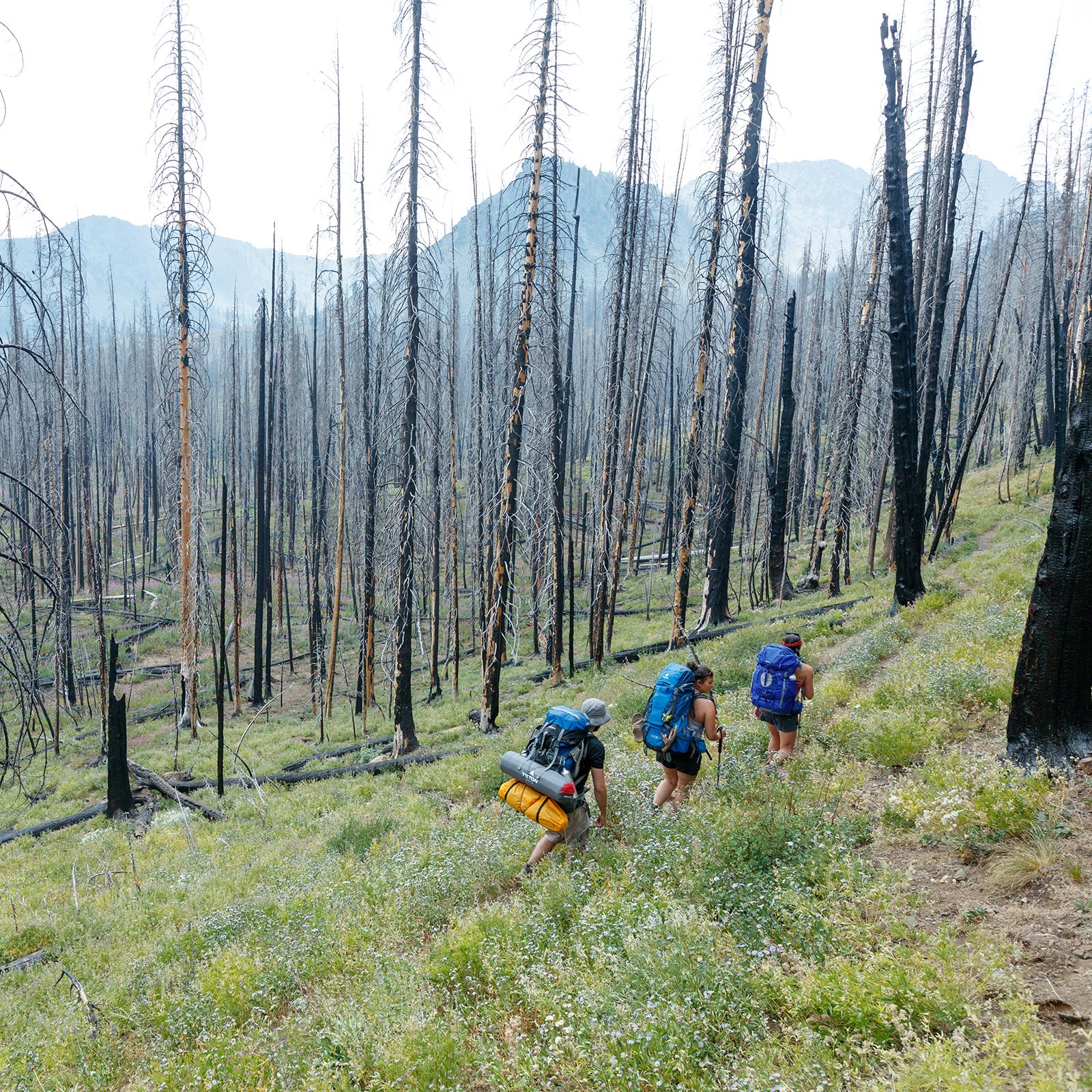It’s the kind of freak accident that nobody thinks could happen to them. In late August, the Skamania County Sheriff’s Office in Washington State received a broken cell-phone call. A tree had fallen and struck Finn Bastian, a 28-year-old from Germany, while he was hiking on the Pacific Crest Trail. As emergency responders rushed to the scene, Bastian’s condition deteriorated. Search and rescue managed to bring Bastian to the trailhead, but after CPR failed to revive him.
The tragedy happened two weeks after another tree , 56, as she slept in her tent on the Colorado Trail. Falling timber killed a hiker on the Appalachian Trail in 2015 and again in 2018. And two kids died in Yosemite Valley, California, when a limb from an oak tree , also in 2015.
There are no exact statistics kept on the number of Americans killed by falling trees, so it’s difficult to know for sure if the problem has gotten worse, and if so, how much worse. After all, you’re still far more likely to die driving to the trailhead than you are from a falling tree, says Wesley Trimble of the American Hiking Society. But it turns out, the tragedies named above may not be isolated incidents—especially as phenomena like beetle kill, wildfire, and climate change continue to ravage American forests at increasing rates.
“A lot of forests are suffering, whether it’s from pine beetles, other invasive species, or diseases that are causing trees to die off,” says Trimble. “The likelihood of trees falling down is a much lower possibility when there is a forest full of healthy trees, but there are a lot of unhealthy forests, especially along the Colorado Trail and Pacific Crest Trail.”

In California and Colorado, forests are littered with a particularly high number of still-standing dead trees, known as snags. An unprecedented have died from drought and bark beetles since 2010 (both afflictions have been linked to climate change). Any of those dead trees can fall at any moment, especially once they’ve been left standing long enough that their roots begin to rot, leaving them precariously unsupported.
All that’s in addition to the deadwood that has accumulated over a century of fire suppression. The result is forests stocked with vertical firewood—which can lead to the kind of massive, out-of-control wildfires that have plagued California in recent years. These fires, of course, kill even more trees. While some burnt trunks fall over, many remain standing—adding to the risk of falling timber. For that reason, burn areas are particularly at risk for spontaneous falls. That’s a problem for many thru-hikers; both the Continental Divide Trail and the Pacific Crest Trail wander through a number of burn zones.
So, are the numbers of standing dead trees increasing? It’s hard to make a global statement. But in Colorado, for example, there were an estimated as of 2017. That’s one in 14 trees—as much as 30 percent more than in 2010.
“As the climate gets dryer and hotter, these problems are going to become even greater, at least until we change the way our forests are managed,” says Trimble.
Trail crews work to make hiking paths safer, but there are simply too many dead trees. Even can’t get to them all, which means it’s impossible to completely eliminate the risk. A single crew will often remove hundreds of downed trees from a section of trail each season, but its priority is typically the downed trees blocking the trail—not dead trees that are still upright.
The prospect of falling trees shouldn’t keep anyone out of the woods, says Trimble, but it is a real danger. As a thru-hiker and former trail-crew supervisor, he has a few precautions that he thinks every hiker, camper, and backpacker should consider when in the forest. Here are his top tips.

Look Up
You can get hit by a tree while hiking, but the bigger danger comes when you’re sitting still, like while taking a lunch break or lounging in your tent. It doesn’t take long to evaluate your surroundings, and that’s the easiest way to avoid a hazardous situation.
“There are campsites that people have used for years and years, but people never look up [to assess the trees in the area],” says Trimble. “I honestly don’t think enough backpackers and hikers evaluate that risk.”
There are two things to look for first: hung snags and widow-makers. Hung snags are dead trees that have begun to fall but are caught in the branches and trunks of adjacent trees and haven’t hit the ground. Even if they look stable, they could easily shift, break apart, or even uproot the tree they’re leaning on.
Widow-makers, or foolkillers, describe broken limbs and branches hanging freely in a tree. Even tiny a disturbance can cause a widow-maker to come crashing to the ground.
You should also evaluate any other dead trees in the area. Trimble says there are so many snags in today’s forests that it’s often impossible to find a primitive campsite without any nearby. Maintained campgrounds sometimes remove trees that are deemed dangerous. But if there are dead trees, it’s simply a judgment call. If you see a snag that’s leaning or appears unstable, it’s probably worth pitching your tent elsewhere.
This might sound like a lot, but in practice, it doesn’t take long to check for hazards. “Take two seconds and evaluate what’s above you,” says Trimble. It could save your life.

Be Alert to the Weather and Your Surroundings
If it’s windy, maybe save that hike through a burn zone for another day. Heavy rain can saturate soil, making it easier for a snag to uproot. If you notice trees leaning over the trail and bobbing up and down, take heed.
When it comes to avoiding falling trees, hiking is less risky than camping or taking a break along the trail, because it’s an advantage to be already moving. Trees fall fast, but being on your feet and able to quickly get out of the way can make a difference. Still, that won’t matter if you aren’t paying attention to what’s around you. “I know a lot of PCT hikers listen to music or podcasts or audiobooks on trail,” says Trimble, “but when it’s windy out, I intentionally do not have my earbuds in so I can be more aware of my surroundings.” Often, snags will creak or crack before they falter, so keep your ears open. It could help you notice an impending fall before it happens.
A completely windless day is no guarantor of safety, however. Trees can fall due to disease, rot, and other reasons, even in calm weather. (The tree that killed Finn Bastian on the PCT, for example, was at its base.)
The odds of getting hit by a falling tree or limb are still small and often a matter of chance. But a basic awareness of the danger is an easy way to make those odds even smaller.


